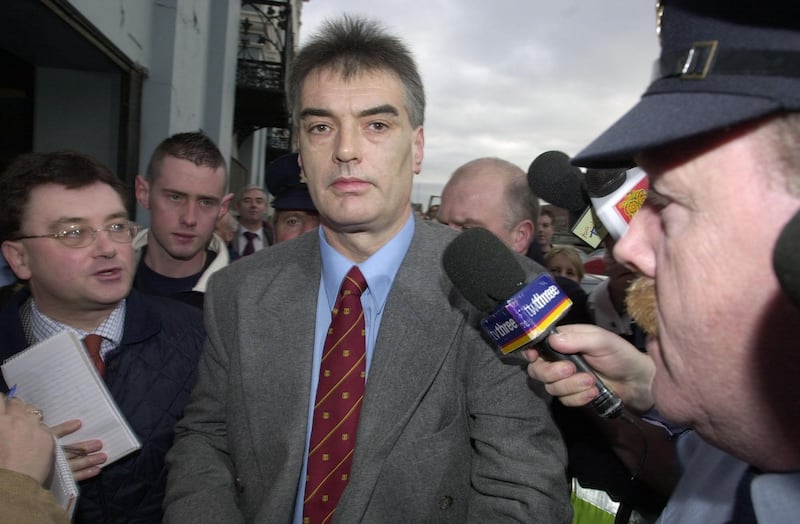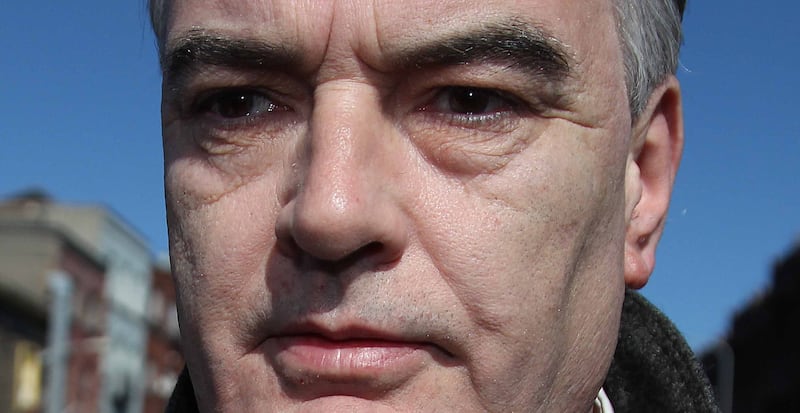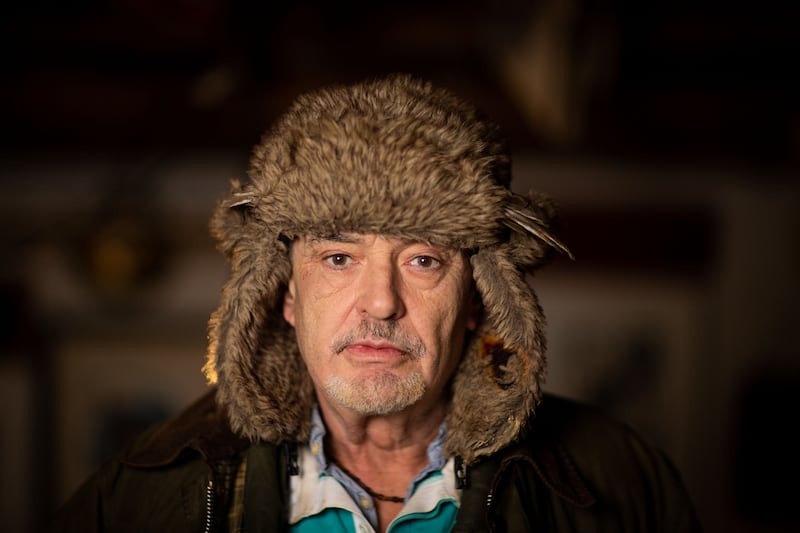1991: English journalist Ian Bailey moves to Ireland and settles in west Cork, where he meets Welsh artist Jules Thomas and sets up home with her and her three daughters at the Prairie, Liscaha, Schull.
1993: French film producer Sophie Toscan du Plantier buys a holiday home in the isolated townland of Drinane near Toormore outside Schull and she uses it as a quiet retreat from her busy life in Paris, where she is married to French film mogul Daniel Toscan du Plantier.
1996, December 23rd: The badly beaten body of Ms Toscan du Plantier (39) is found in her nightclothes near the laneway leading to her holiday home.
1997, January 11th: Local resident Marie Farrell rings Bandon Garda Station from a public phone box in Cork city, using the alias Fiona, to tell them that she saw a man by Kealfadda Bridge around 3am on the night that Ms Toscan du Plantier was murdered. She makes two further calls using the same alias but gardaí trace the call to the Farrell home.
My brother Ian Bailey: ‘He pleaded his case and begged me to keep in touch, and I did’
Agreement reached on document disclosure in Jules Thomas’s case against Netflix
Funeral of Sophie Toscan du Plantier’s father: ‘He wasn’t afraid to die because he knew he would see her again’
‘A man of great decency and dignity’: Sophie Toscan du Plantier’s father died without ever knowing the truth
1997, February 4th: Schoolboy Malachi Reid gives a statement to gardaí that when giving him a lift home, Mr Bailey told him that he killed Ms Toscan du Plantier, saying that he “went up there with a rock and bashed her f**king brains out”.
1997, February 10th: Mr Bailey is arrested at his home at for the murder of Ms Toscan du Plantier. He is later released without charge. His partner, Ms Thomas, is also arrested at the Prairie and taken to Bandon Garda Station. She too is later released without charge.
1997, September 29th: State Solicitor for west Cork Malachy Boohig sends a 2,000-page file on the murder to the DPP. He receives a letter back on 8th October from law officer Robert Sheehan with a series of questions for gardaí and no charges are brought.

1998, January 27th: Mr Bailey is arrested a second time at the Prairie and again brought to Bandon Garda Station for questioning about the murder of Ms Toscan du Plantier. He is again released without charge.
1998, March 9th: Mr Boohig attends a meeting in Bandon with senior gardaí after which he says he is approached by Det Chief Supt Sean Camon who asks him to convince then minister for justice John O’Donoghue to get the DPP to charge Mr Bailey.
1999, March: French film-maker Guy Girard comes forward to tell gardaí how Ms Toscan du Plantier had told him in early December 1996 about a friend she had in Ireland called Ian Bailey who was exploring themes of violence in his writings.
2001, August 18th: Mr Bailey assaults Ms Thomas at their home. He is arrested at Cork Airport and later charged and prosecuted. He receives a three-month suspended sentence at Skibbereen District Court. He later admits it was his third time assaulting Ms Thomas.
2001, November: Solicitor at the DPP’s office Robert Sheehan writes a 44-page analysis of the Garda evidence in the case against Mr Bailey and is highly critical of aspects of the Garda investigation before concluding the evidence does not warrant a prosecution.
2002, January: Commissioner Pat Byrne appoints a review team under Chief Supt Austin McNally to examine the Garda investigation into the murder of Ms Toscan du Planter following Mr Sheehan’s highly critical analysis of the original investigation.
2003, March: A new file is submitted to the DPP following the McNally review but the DPP, James Hamilton, again decides against a prosecution due to lack of evidence but says that the matter will be reviewed if any new evidence comes to light.
2003, December: Mr Bailey starts a libel action at Cork Circuit Court against eight newspapers over their linking of him to the murder of Ms Toscan du Plantier. He loses six of the actions but wins against two papers. Some eight witnesses testify for Mr Bailey and 20 testify for the newspapers, among them Ms Farrell, who proves to be a key witness, confirming her statement to gardaí that she saw a man she later learned was Mr Bailey at Kealfadda Bridge on the night of the murder.

2004: Mr Bailey sends a solicitor’s letter threatening legal action against Ms Farrell if she does not retract comments she made about him in the media following the conclusion of the libel action. Ms Farrell sends a solicitor’s letter in response refusing to retract her comments.
2005, April: Ms Farrell contacts Mr Bailey’s solicitor, Frank Buttimer, and alleges she was coerced by gardaí into making a false statement incriminating Mr Bailey. She retracts her statement that the man that she saw at Kealfadda Bridge was Mr Bailey.
2007: Mr Bailey begins a High Court appeal over his libel action against the newspapers. The case is settled after three days with the newspapers acknowledging that they never intended to suggest that he murdered Ms Toscan du Plantier.
2007, May 1st: Mr Bailey lodges a High Court papers suing the then minister for justice and the then garda commissioner for wrongful arrest, false imprisonment, conspiracy, assault, battery, trespass to the person, harassment, intimidation and breach of his constitutional rights.
2010, February 19th: French magistrate Judge Patrick Gachon issues a European arrest warrant for Mr Bailey’s arrest in connection with the murder of Ms Toscan du Plantier. Under French law, French authorities can investigate crimes against French citizens committed outside of France.
2010, December: Mr Bailey graduates with an honours degree in Law from UCC. He goes on to complete a Masters of Law at UCC in February 2013 after completing a thesis entitled Policing the Police – Garda Accountability in Ireland.

2012, March 1st: The Supreme Court rules in Mr Bailey’s favour in his appeal against extradition to France on a number of grounds including that the French authorities failed to specify that the arrest was for the purpose of charge.
2014, October: The Garda Síochána Ombudsman Commission is ordered by the High Court to share material it has gathered in its investigation into complaints by Mr Bailey against gardaí.
2015, March 30th: Mr Bailey loses his civil action for damages against the Garda and the State.
2015, May 12th: Mr Bailey is ordered to pay all of the legal costs, estimated at between €2 million and €5 million, of his failed civil action over the conduct of the Garda investigation into the murder.

2019, May 31st: French judge Frédérique Aline and her two colleagues find Mr Bailey guilty of the murder of Ms Toscan du Plantier and sentence him in absentia to 25 years in jail.
2019, June 21st: French authorities issue a third European Arrest Warrant for the extradition of Mr Bailey to France – this time to serve the imposed jail term.
2020, October: The High Court refuses to extradite Mr Bailey to France.
2021: The screening of two separate documentary TV series, Murder at the Cottage by Jim Sheridan and Sophie: A Murder in West Cork by John Dower, highlights the unsolved case anew.
2022, June: The Garda establish a cold-case review into the murder.
2024, January 21st: Mr Bailey (66) dies in west Cork.
- Sign up for push alerts and have the best news, analysis and comment delivered directly to your phone
- Find The Irish Times on WhatsApp and stay up to date
- Our In The News podcast is now published daily – Find the latest episode here














